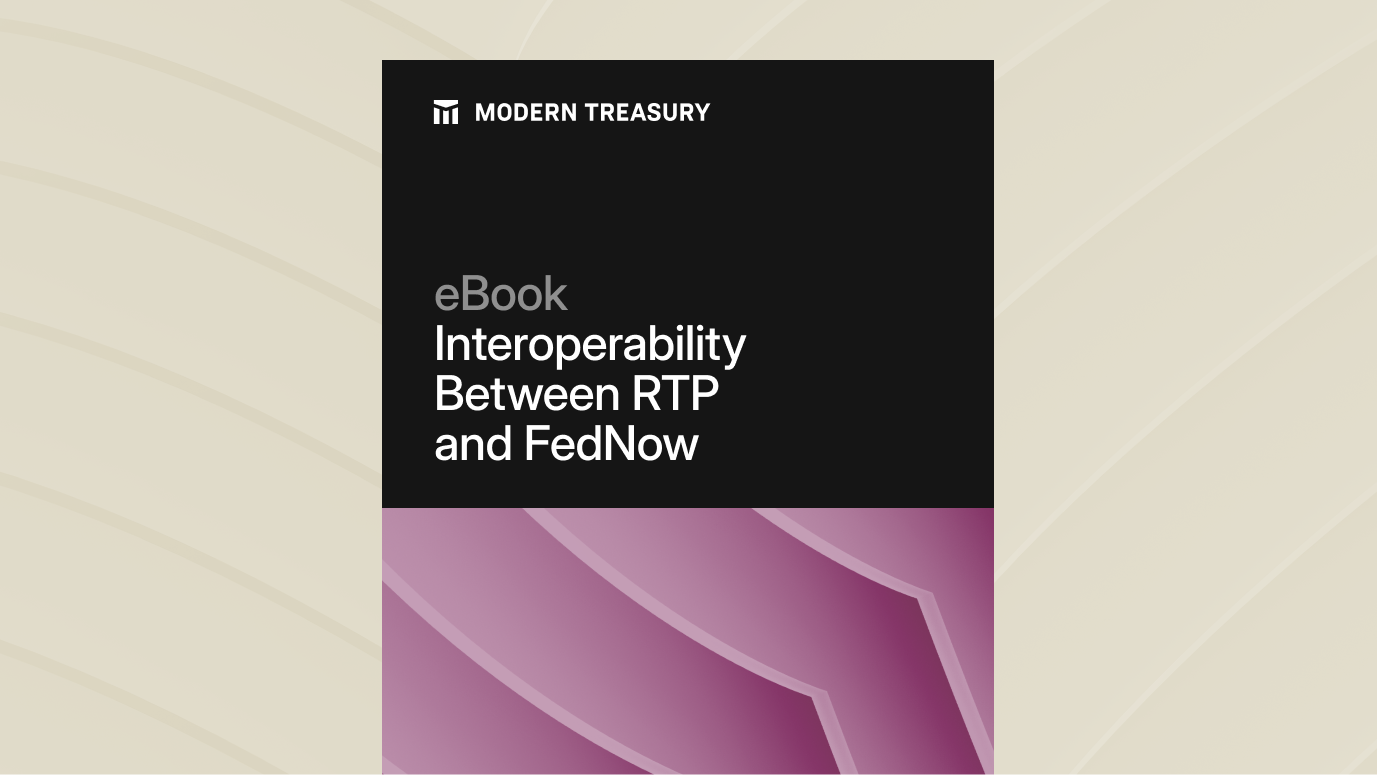Join us at Transfer 2025 to hear how industry leaders are building payments infrastructure for a real-time world.Register Today →
The Keys to Faster Payments Adoption
Widespread faster payment adoption hinges on a few key developments. This journal digs into three important drivers for the usage of rails like RTP and FedNow, as well as potential barriers to success.

Faster payments have the potential to utterly transform how money moves in the US. Still, the sea change some expected with RTP hasn’t happened yet. It also remains to be seen whether FedNow, coming in 2023, will instead be the catalyst for US payments modernization. This journal digs into important drivers for faster payment adoption and potential barriers to widespread usage.
Faster Payments Adoption: Key Drivers
Three variables are vital to widespread faster payments adoption:
- A robust payments ecosystem built for speed and security
- A broad understanding (from business teams to consumers) about how real-time payments work
- Increased coverage of faster payment rails
A collaborative ecosystem
The adoption and success of faster payments rely on multiple institutions and individuals. These parties work both independently and collaboratively to support the faster payments ecosystem.

There are four roles in this ecosystem, as laid out by the Fed:
- Consumers. This group makes faster payments using mobile or online banking systems.
- Businesses, nonprofits, and government organizations. This group makes and receives faster payments through Accounts Payable/Account Receivable (AP/AR), Treasury Management Systems (TMS), Enterprise Resource Planning (ERP) systems, or a Payroll Processing system.
- Financial institutions (FIs). FIs facilitate faster payments made by customers using their core banking systems, which connect across the ecosystem.
- Payment (or interbank) network operators. This group, which includes The Clearing House’s RTP network for example, receives and routes faster payments messages through FIs and/or third party payment network access providers.
When the first two groups (the end users) understand the benefits of faster payments, they can motivate the other parties to adopt them. For FIs to meet this demand, upgrades to systems and processes are often obligatory. The network operators offer clearing and settlement services to support adoption—they also set the requirements (technical and operational) required for FI participation.
Service providers play a supporting role in this ecosystem; per the Fed, they are “the connective tissue between financial institutions and their customers, and/or between financial institutions and the network operators.” For this reason, service providers must also prepare and upgrade their platforms to meet the requirements for faster payments. As a service provider, Modern Treasury is well-prepared for faster payments adoption—our platform already powers companies offering instant ACH products and RTP at scale.
Knowledge sharing
Achieving widespread adoption of faster payments is a bit like the catch-22 of category creation. In order for businesses to warrant investment in innovation (i.e., faster payments), they want to ensure customer desire. But if customers don’t understand the new offering (again, faster payments), their marginal desire won’t justify the business spend.
The solution lies in information sharing and community building—and the work begins at the company level. Business leaders need to understand how faster payments work, what readiness looks like, and what the advantages are, for companies and end users alike. They should engage with available networks and communities, including those available for RTP and FedNow.
This preparation enables businesses to share the faster payments offering with potential customers in a clear, accurate, and timely way.
Another focus for this marketing, outreach, and education should be trust. End users need to be aware of what your business is doing to secure their funds and reduce faster payments fraud. And because faster payments can make end users vulnerable, companies that share useful tips and well-timed warnings can improve security for everyone.
Increased coverage
One reason faster payments in the US have lagged behind other countries is a lack of coverage.
For individual businesses, faster payments can serve to surprise and delight partners and customers. But until some quantity of companies within relevant verticals adopt real-time payments, they may not become a truly competitive advantage.
The more mainstream offerings like RTP and FedNow become, the more stakeholders across the board will come to seek them out and expect them.
Proponents of FedNow see the low cost and wide coverage (relative to RTP) of this new rail as a potential tipping point, encouraging expansive adoption of faster payments in the US. If they’re right, ubiquitous faster payments could also open up exciting economic connections, including faster payments across borders that redefine money movement globally.
Overcoming Barriers to Adoption
One primary obstacle to faster payments adoption is the difficulty of pulling back current payments infrastructure.
Older payment rails like ACH, wire, and cards continue to dominate the payments landscape. Even with the advent of RTP in 2017, ACH still accounts for the lion’s share of money movement. In 2021, more than 29 billion ACH payments were made, totaling close to $73 trillion.
This isn’t surprising if you consider that:
- RTP isn’t available at many banks (and RFP is rare)
- US faster payments technology has lagged behind other countries
- Traditional rails have been entrenched for anywhere between 149 years (wire), 72 years (card), and 46 years (ACH)
The adoption of instant payments requires adjustment for every role in the payments ecosystem.
For businesses, faster payments require infrastructure to support the full cycle of money movement, just like any other rail.
This includes solving for payment initiation and approvals, funds tracking, failure/returns management, reconciliation, virtual accounts, ledgering, controls, and compliance. The choice to build in-house will likely require hundreds of hours and significant cost—Modern Treasury estimates that building a new payment rail would require one or two engineers up to two months, depending on the bank.
For businesses performing upgrades, the same requirements apply. Not to mention the need to plan for ongoing management, maintenance, reliability checks, and improvements. And in all cases, faster payments adoption will make it necessary to adjust processes and workflows. To give just one example, faster payments are not batch processed—this difference alone requires a major shift away from daily, weekly, and monthly transaction and reporting cadences.
Bolstering Your Payments Ecosystem
Modern Treasury automates money movement across rails including RTP and FedNow. Simplify, streamline, and upgrade your payments operations to ensure your business is ready for wide scale faster payment adoption. Reach out anytime to connect with our sales team.
Be ready for faster payments
Prepare your business for RTP and FedNow with this comprehensive guide.







